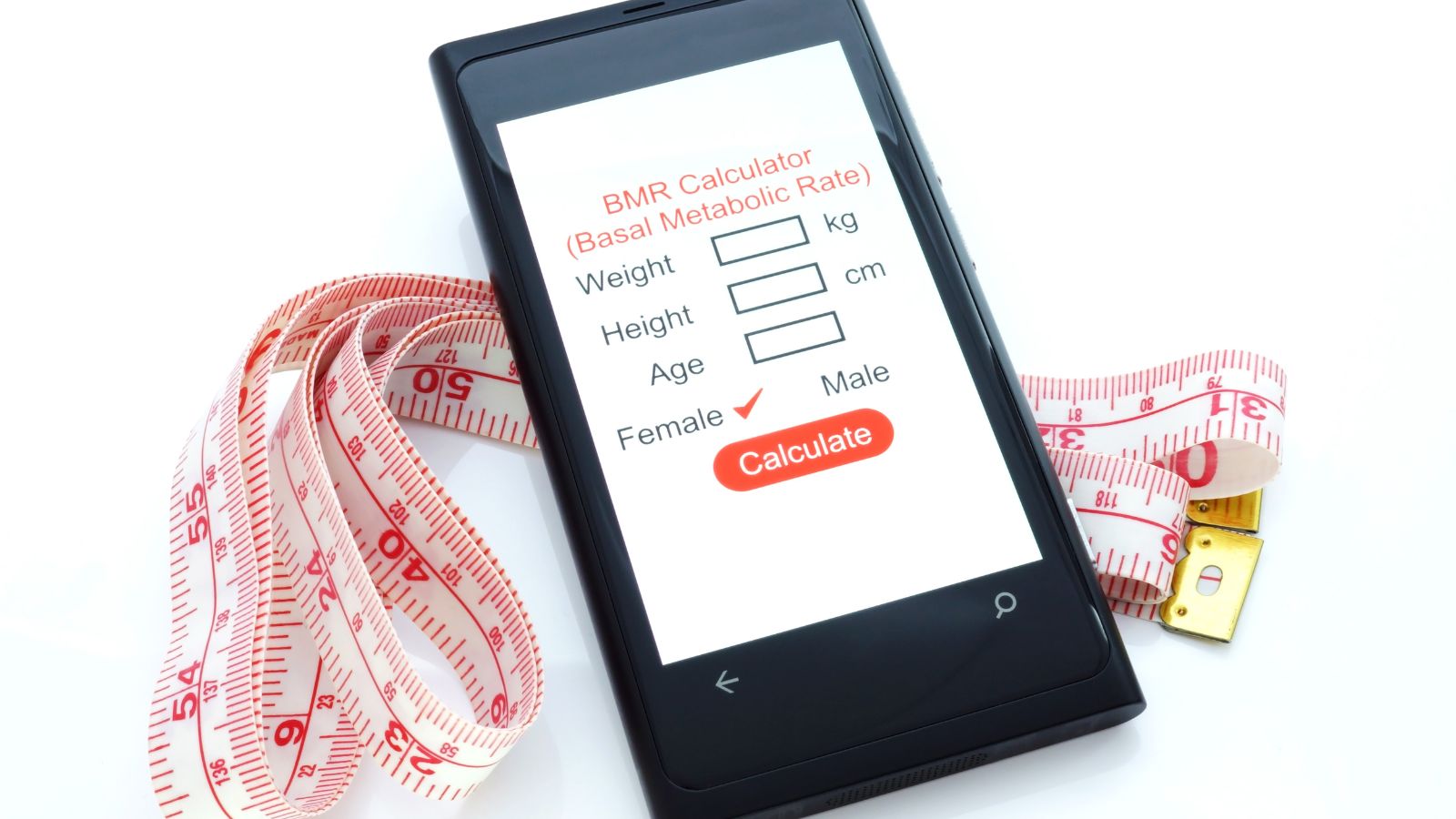If you’ve ever tried to calculate your calories for weight loss, muscle gain, or maintenance, you’ve probably seen the acronyms TDEE and BMR. They sound similar, but they serve different purposes. Understanding the difference between TDEE vs BMR is essential for accurate calorie tracking and long-term results.
In this article, we’ll explain what they mean, how to calculate them, and when to use each for your fitness goals.
What Is BMR?
BMR (Basal Metabolic Rate) is the number of calories your body burns at rest — just to stay alive. This includes:
- Breathing
- Blood circulation
- Cell repair
- Organ function
Your BMR makes up about 60–70% of your total daily energy use, even if you don’t move all day.
Formula (Mifflin-St Jeor):
BMR=(10×weight in kg)+(6.25×height in cm)−(5×age)+sBMR=(10×weight in kg)+(6.25×height in cm)−(5×age)+s
s = +5 for men, -161 for women
Example: A 30-year-old woman, 165 cm tall, 68 kgBMR=(10×68)+(6.25×165)–(5×30)–161=1392kcal/dayBMR=(10×68)+(6.25×165)–(5×30)–161=1392kcal/day
What Is TDEE?
TDEE (Total Daily Energy Expenditure) includes your BMR plus all the calories you burn through movement, digestion, and activity.
It consists of:
- BMR – Base metabolic needs
- TEF (Thermic Effect of Food) – ~10% of calories burned digesting food
- NEAT (Non-Exercise Activity Thermogenesis) – fidgeting, walking, chores
- Exercise – Formal workouts and training
You calculate TDEE by multiplying BMR by an activity factor:
| Activity Level | TDEE Multiplier |
|---|---|
| Sedentary | BMR × 1.2 |
| Light activity (1–3x/week) | BMR × 1.375 |
| Moderate (3–5x/week) | BMR × 1.55 |
| Active (6–7x/week) | BMR × 1.725 |
| Very active (twice daily) | BMR × 1.9 |
TDEE vs BMR: Key Differences
| Metric | BMR | TDEE |
|---|---|---|
| Measures | Resting energy use | Total daily energy needs |
| Includes activity? | No | Yes |
| Used for | Baseline calories | Calorie goal setting |
| Affects | Survival metabolism | Weight change strategy |
In short, BMR is your baseline, and TDEE is what you actually need to eat based on your lifestyle.
When Should You Use BMR vs. TDEE?
| Goal | Use BMR | Use TDEE |
|---|---|---|
| Calculating base metabolism | ✅ | ❌ |
| Setting weight loss calories | ❌ | ✅ |
| Reverse dieting or bulking | ❌ | ✅ |
| Estimating minimum calorie needs | ✅ | ❌ |
For example, if your TDEE is 2,200 and you want to lose weight, subtract 250–500 calories to target fat loss safely. But knowing your BMR tells you the minimum calories your body needs — so you don’t go too low and stall metabolism.
Key Takeaways
- BMR is the number of calories your body burns at rest, while TDEE includes all daily activities.
- Use BMR to understand your base needs and TDEE to determine how much to eat for fat loss, muscle gain, or maintenance.
- TDEE = BMR × activity multiplier
- Avoid eating below your BMR — this can trigger muscle loss, fatigue, and hormone imbalances.
- Recalculate your TDEE every 6–8 weeks or when your activity, body weight, or goals change.
Read Next
References
Subscribe now and get a 14-day free trial workout app for iPhone users.





